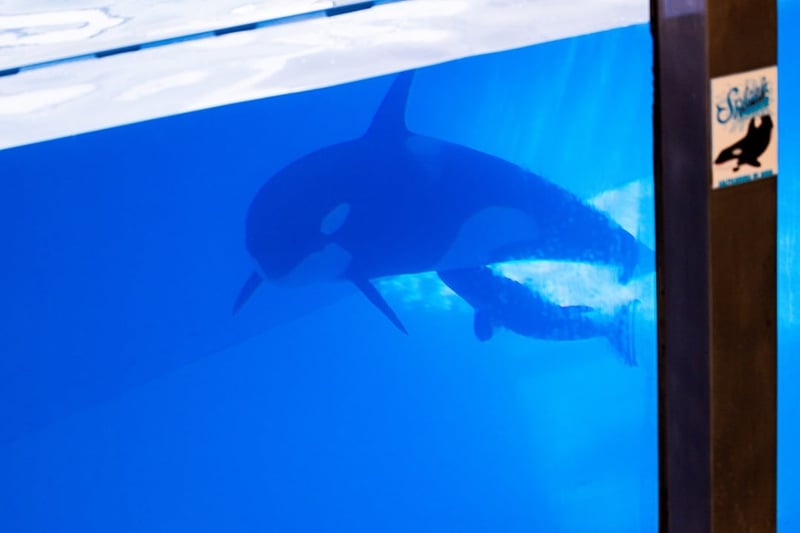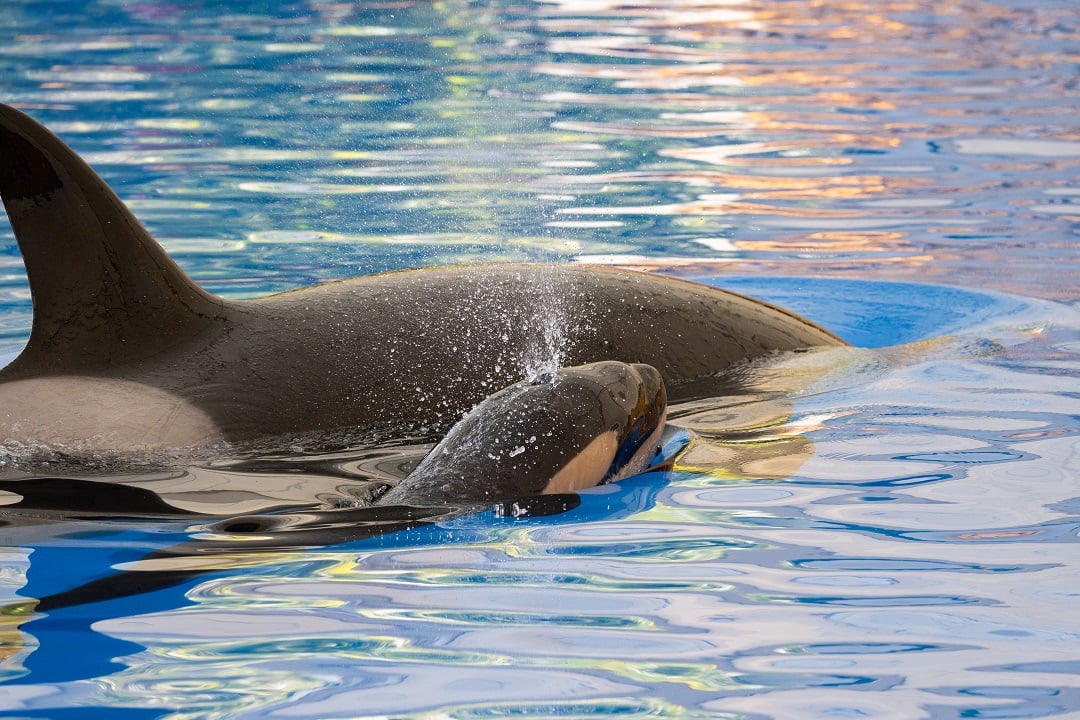
Another generation born into captivity
Blog
Trapped in a concrete tank, Morgan and her new calf face a future without freedom – but seaside sanctuaries could change their story.
In the wild, orcas live in large, close-knit multi-generational pods where family is everything. When a calf is born, the whole community helps to raise them. In this matriarchal society, the older females will pass down their knowledge – how to hunt, navigate and communicate in the vast ocean. The bond between mother and calf is especially strong and the young often stay with their mother for their whole lives. Together, they travel great distances each day, diving deep and exploring life at sea.
This is the life Morgan should have known.
Morgan’s story
Morgan is a female orca who was found malnourished off the coast of the Netherlands in 2010. She was captured for rehabilitation, with the intention of being released back into the wild where she would return to her family.
Instead, tragically, she was sent to Loro Parque, a zoo in Spain where she has been used in performances to entertain tourists ever since. Instead of living in the vast ocean with her pod, she is confined to a concrete tank in artificial social structures. She was taken away from any chance at a natural life.
Life in captivity isn’t easy for these intelligent, sentient beings. The stress of confinement often leads to immense physical and psychological distress.
Four orcas have died at Loro Parque since 2021, including Morgan’s first calf, Ula, who didn’t survive past her second birthday. Despite this, Loro Parque has continued their breeding program.
Another generation born into captivity
In the early hours of March 31, 2025, Morgan gave birth to her second calf. What should have been a joyous occasion, instead marked the beginning of another life in captivity. This young calf will likely never experience the rich bonds and freedoms of life in the wild.
 Morgan and her young calf at Loro Parque (photo taken by World Animal Protection when Morgan’s calf was less than a week old.)
Morgan and her young calf at Loro Parque (photo taken by World Animal Protection when Morgan’s calf was less than a week old.)
Instead of having her pod with her to help her raise her calf, Morgan is alone. Instead of roaming the vast ocean, Morgan and her calf are confined to their small, barren concrete tank. Unless something changes, this calf will spend their entire life performing for tourists and never knowing their true home - the ocean.
Hope in seaside sanctuaries
Imagine instead, that Morgan and her calf get to swim through cool ocean currents instead of floating listlessly in chlorinated waters. Imagine the sounds of waves, seabirds and other wildlife instead of screaming tourists, blaring music and applause. Imagine them diving deep and exploring instead of being forced to perform tricks.
This is the promise of seaside sanctuaries.
Seaside sanctuaries offer a humane solution to captivity in aquariums. They offer a spacious, enriching environment with conditions that better mimic their natural habitats, giving orcas the freedom to swim, dive and engage in their natural behaviours. In a true sanctuary, the animal’s well-being comes first – not profit.
This vision is becoming a reality. Several seaside sanctuary projects are underway around the world including an initiative right here in Canada. The Whale Sanctuary Project in Port Hilford, Nova Scotia, is a sanctuary initiative that hopes to offer cetaceans like Morgan a peaceful life where they are no longer exploited for profit, but respected as the wild, sentient beings they are.
But to make this future possible, we need governments around the world to take action – just as Canada did when it banned the use and breeding of cetaceans for entertainment in 2019. It's time for countries like Spain to follow suit.
With enough public pressure, we can push governments to:
- End the breeding of whales and dolphins in captivity.
- Support the development of seaside sanctuaries as a humane alternative.
- Work with animal welfare experts to ensure captive cetaceans get the care they deserve.
With your support, we can build a world where no whale or dolphin is born into a concrete tank – and where those still in captivity can finally know peace.